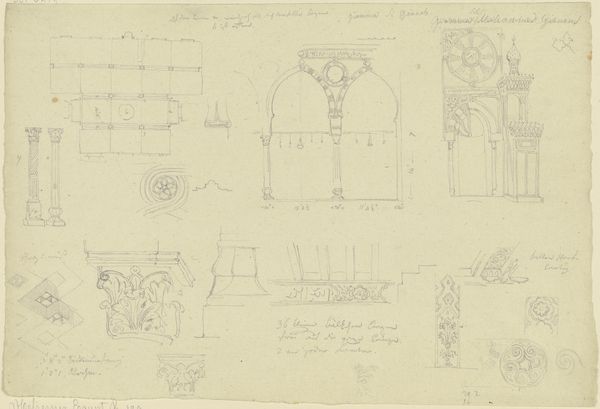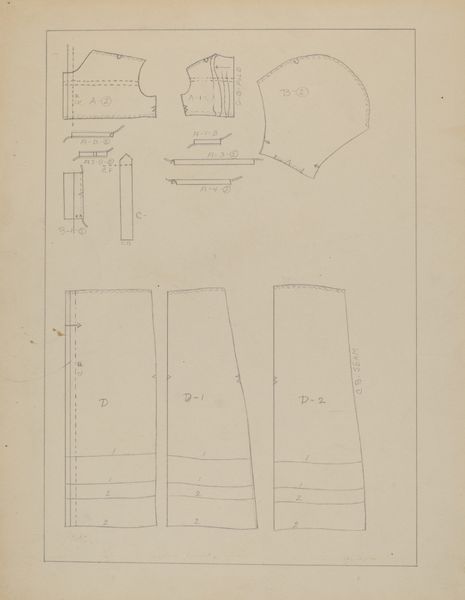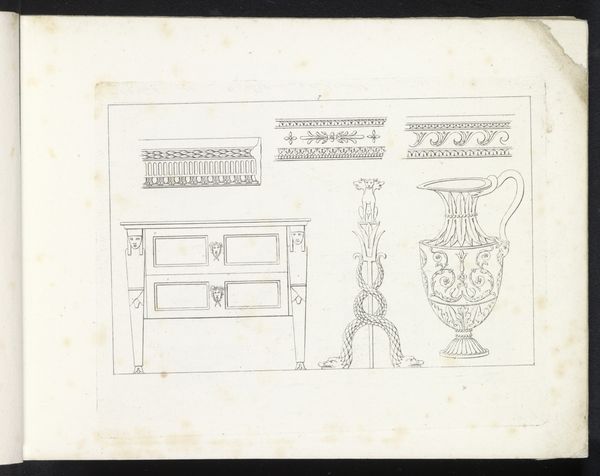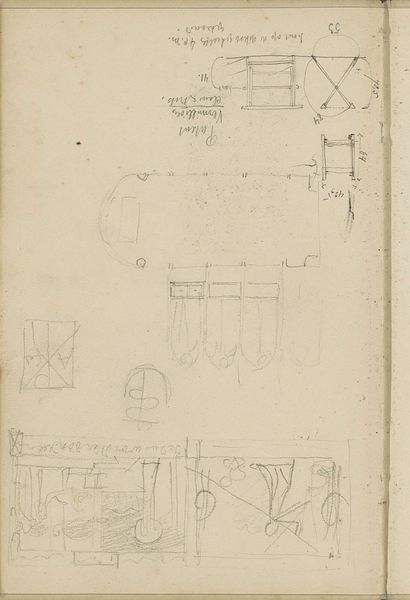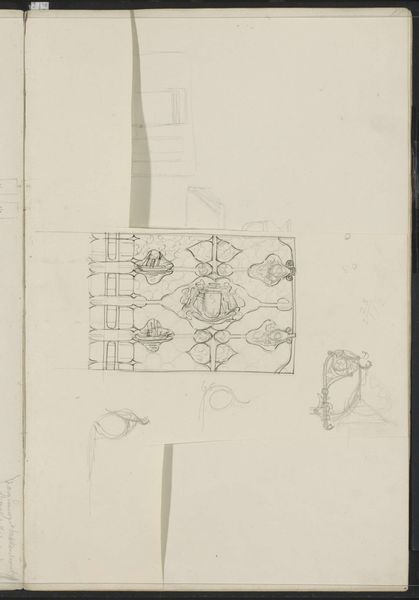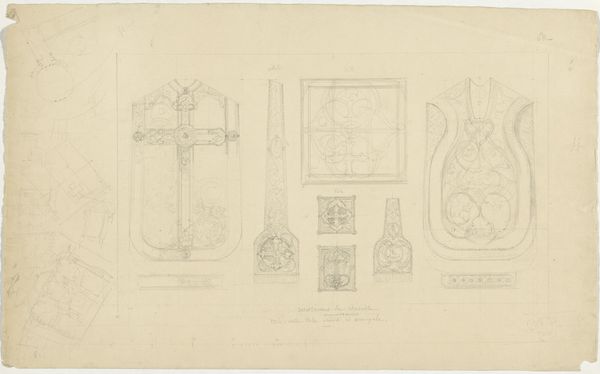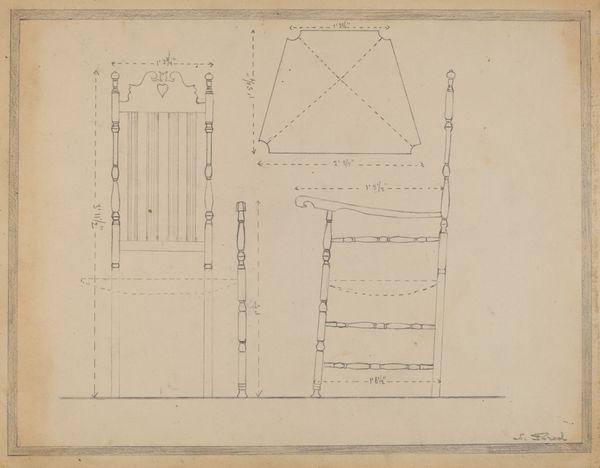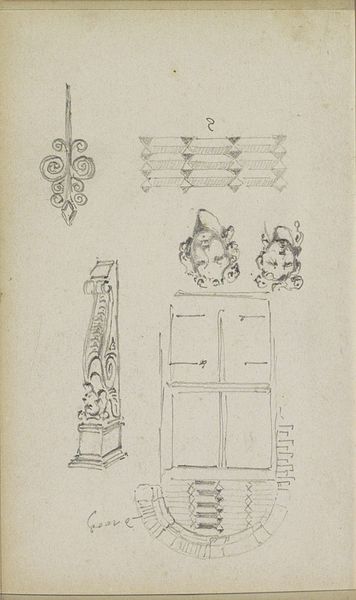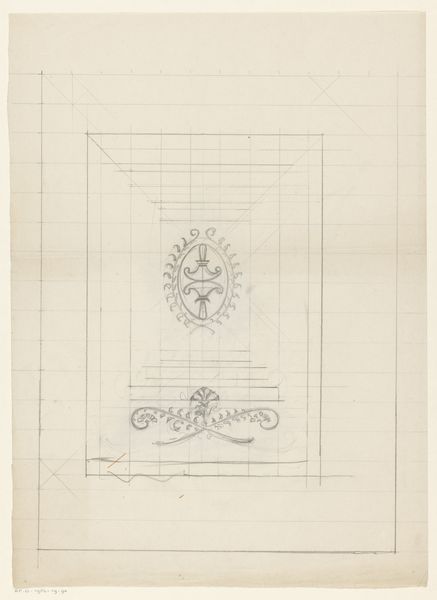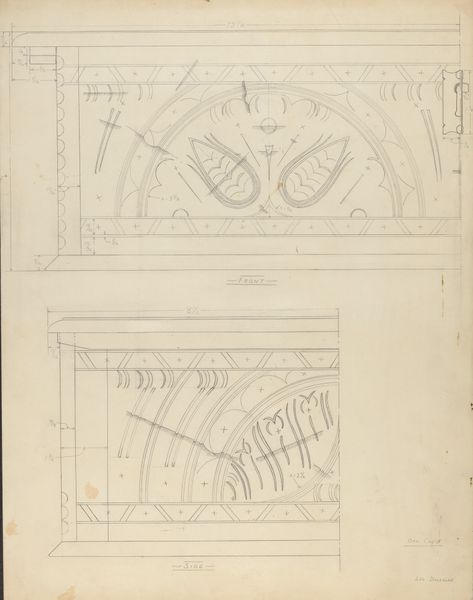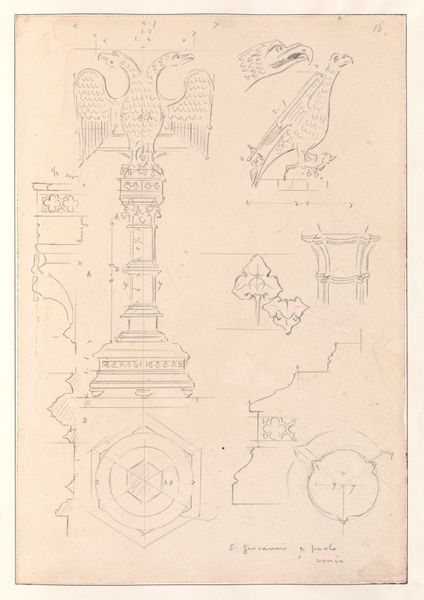
drawing, ornament, paper, pencil
#
drawing
#
aged paper
#
ornament
#
toned paper
#
quirky sketch
#
sketch book
#
paper
#
personal sketchbook
#
idea generation sketch
#
sketchwork
#
geometric
#
pencil
#
sketchbook drawing
#
islamic-art
#
storyboard and sketchbook work
#
sketchbook art
Dimensions: height 191 mm, width 125 mm
Copyright: Rijks Museum: Open Domain
Curator: Here we have “Negen schetsen van ornamenten en versieringen,” or "Nine Sketches of Ornaments and Decorations," crafted around 1858-1859 by Willem de Famars Testas. Editor: Well, looking at this page of muted grey, with its delicate pencil lines, I am instantly transported to a sun-drenched courtyard, with the soft sound of a fountain somewhere nearby. It feels like a half-remembered dream of a beautiful, tranquil place. Curator: It's a sketchbook page, a collection of geometric ornament studies drawn on paper. Notice the repetitions and variations of star patterns. It makes me consider the artist's intent: Was this for architectural details or pure artistic exploration? Editor: Ah, the social life of a pattern! I wonder about the specific context – were these intended for, say, tilework, metalwork, or even woven textiles? These decisions have such a direct impact on how these shapes and designs would ultimately circulate in the world and interact with people. I can see them reproduced for many people. Curator: Indeed. The precision required to translate these drawings into, say, mosaic tiles… or, imagine them adorning a mosque or palace. It is not something the common man could have in his own living room. The level of artisanal skill demanded is profound, isn't it? They point to an engagement with Islamic art themes. Editor: Absolutely, it prompts reflection on the labor involved. The hands that mixed the pigments, cut the tiles, laid them into intricate arrangements… These are not simply abstract designs. I also like thinking how ornaments like these, produced with manual means, relate to today's consumption of mass produced artworks. Curator: It certainly shifts my perspective. Before, I only focused on the drawings themselves as standalone art, but the true beauty is unveiled when you look at the work needed to bring it into a realized object. Editor: Exactly! Considering the materiality grounds these drawings. The sketches still have artistic value. Curator: And seeing it that way deepens the narrative and my overall enjoyment. Editor: Yes, understanding the design’s material existence enriches my view. It’s more than just pencil on paper; it's a doorway.
Comments
No comments
Be the first to comment and join the conversation on the ultimate creative platform.
